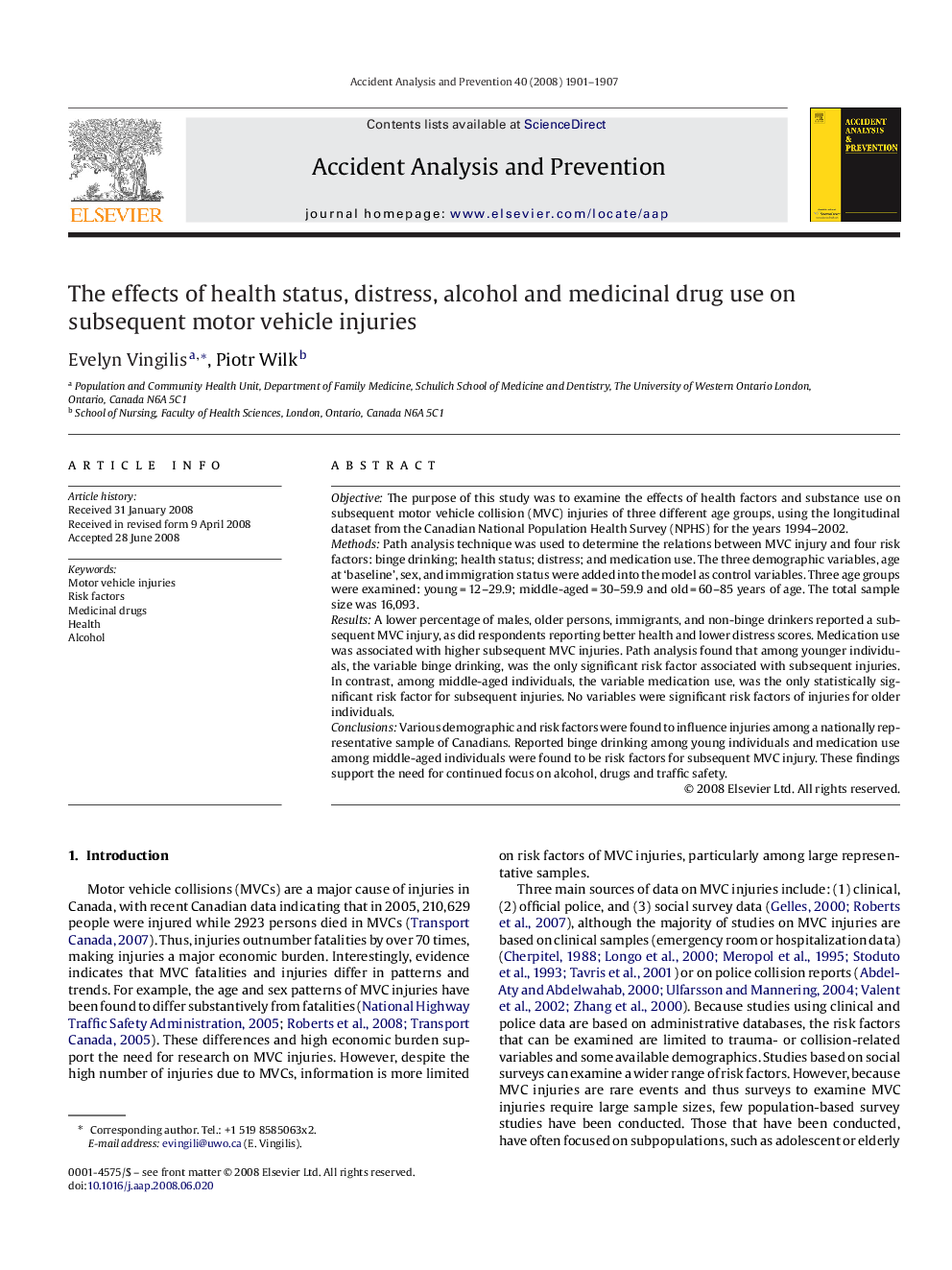| Article ID | Journal | Published Year | Pages | File Type |
|---|---|---|---|---|
| 573329 | Accident Analysis & Prevention | 2008 | 7 Pages |
ObjectiveThe purpose of this study was to examine the effects of health factors and substance use on subsequent motor vehicle collision (MVC) injuries of three different age groups, using the longitudinal dataset from the Canadian National Population Health Survey (NPHS) for the years 1994–2002.MethodsPath analysis technique was used to determine the relations between MVC injury and four risk factors: binge drinking; health status; distress; and medication use. The three demographic variables, age at ‘baseline’, sex, and immigration status were added into the model as control variables. Three age groups were examined: young = 12–29.9; middle-aged = 30–59.9 and old = 60–85 years of age. The total sample size was 16,093.ResultsA lower percentage of males, older persons, immigrants, and non-binge drinkers reported a subsequent MVC injury, as did respondents reporting better health and lower distress scores. Medication use was associated with higher subsequent MVC injuries. Path analysis found that among younger individuals, the variable binge drinking, was the only significant risk factor associated with subsequent injuries. In contrast, among middle-aged individuals, the variable medication use, was the only statistically significant risk factor for subsequent injuries. No variables were significant risk factors of injuries for older individuals.ConclusionsVarious demographic and risk factors were found to influence injuries among a nationally representative sample of Canadians. Reported binge drinking among young individuals and medication use among middle-aged individuals were found to be risk factors for subsequent MVC injury. These findings support the need for continued focus on alcohol, drugs and traffic safety.
